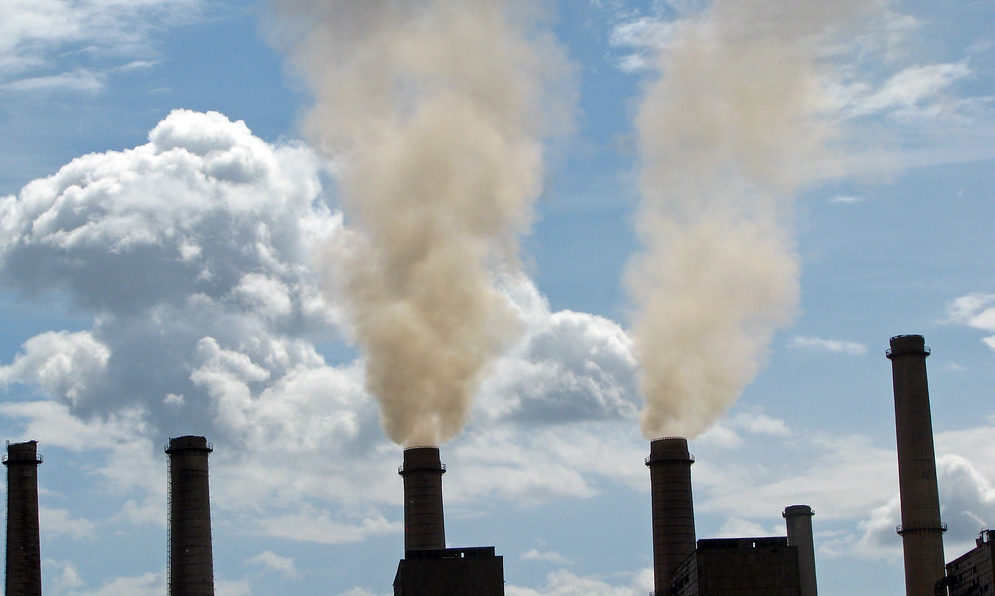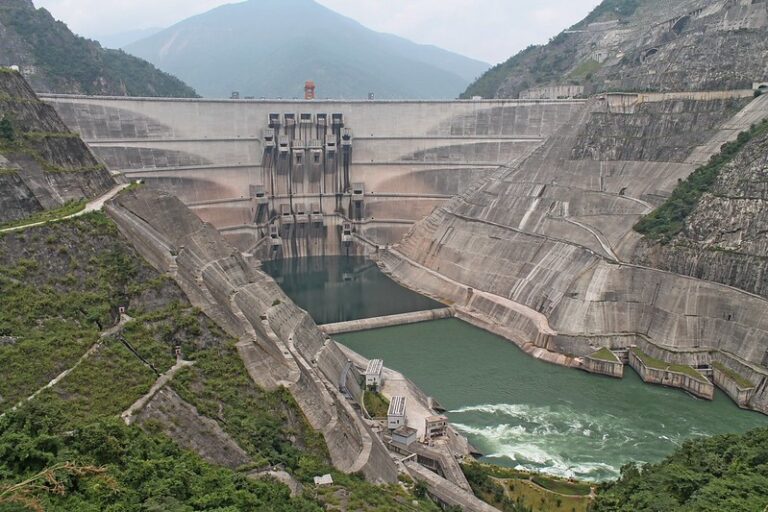China’s Environmental Footprint in Southeast Europe

In 2009, China’s leadership of a group of developing nations that opposed ambitious commitments to fight climate change led to the failure of the United Nations Climate Change Conference held in Copenhagen. Just over a decade later and in spite of recent backsliding, China has become one of the most important countries at the forefront of global environmental leadership, alongside the EU), particularly following the United States’ withdrawal from the Paris Agreement in 2017. This change has been driven by domestic factors rather than by Beijing’s desire to set an example of responsible leadership. However, China’s aspiration to become a global power can be supported if it backs its environmental commitments with credible external actions.
China’s Involvement in SEE Energy Deals
In recent years Southeast Europe (SEE) has become a stepping stone for Chinese-financed infrastructure in Europe. Teaming up with China on big infrastructure projects allows SEE countries to obtain funding for projects that are usually considered ineligible for funding by the EU or European banks due to potential environmental or financial unsustainability. The most flagrant case is the construction – ongoing or planned – of a number of thermal power plants across SEE which go directly against the EU’s ever more stringent rules on energy production and industrial emissions. Three financing deals have been signed so far – Stanari in Bosnia and Herzegovina, with a loan from China Development Bank in 2012 (the plant was finished in 2016); Kostolac in Serbia in 2014 and Tuzla in Bosnia and Herzegovina in 2017, both with loans from China Exim Bank. Moreover, at least six other Memorandums of Understanding have been signed to build thermal power plants, most of them in Bosnia and Herzegovina (Banovici, Kamengrad, Ugjlevik and Gacko).
In addition, Chinese companies have demonstrated interest in hydropower projects which, although not as environmentally harmful as thermal power, do have a negative ecological impact. Having successfully built the Kozjak Hydropower Plant in North Macedonia, Chinese companies signed deals for the Ulog and Buk Bijela hydropower plants in Bosnia and Herzegovina. China has also been eyeing more ambitious – and controversial projects, such as Gornji Horizonti hydropower complex in Bosnia and Herzegovina, the Moraca Dam in Montenegro and Vardar Valley in North Macedonia. A Chinese state-owned company is also one of the five shortlisted companies to become the strategic investor in Bulgaria’s nuclear plant Belene.
Being In or Out of the EU does Matter
All of the thermal power plants are intended to exploit coal reserves from nearby mines. In most cases, it is the lowest quality and most polluting type of lignite coal, exploited in combination with inadequate use of environment protection measures (filters, desulphurization units etc.), which not only increase air pollution levels but also lead to water and soil pollution due to improper ash disposal procedures. With over 30 coal-powered plants in SEE, this phenomenon is already recurrent even without the additional thermal power capacity financed and built by China.
Membership within the EU has shown a higher correlation with reduced dependence on coal, in line with the EU’s 2030 targets, whereas in non-EU countries, coal power is seen as “good business” for both corporations and governments.
Two recent examples from the region are instructive. In Greece, a landmark victory for environment NGOs was achieved early this year after a Greek court ruling to annul environmental permits for two lignite plants which did not comply with EU and national legislation, halting Chinese ambitions to build the thermal plant Meliti II in the northern part of the country. In Romania, following EU pressure, in July 2019 the government once again deferred the construction of a new coal plant in Rovinari which was supposed to be the result of a PPP deal signed with a Chinese company back in 2012.
To the contrary, non-EU governments do not seem to be “bothered” by EU regulation when concluding energy deals. Being outside the EU, environmental legislation in most accession countries is not fully aligned with the EU acquis. Even when it is, there are many ways for the national governments to circumvent enforcement when they wish to do so. In that context, the loan for the Tuzla thermal power plant was one of the rare moments that united Bosniak and Croatian politicians in the Federation, paying little attention to the infringement procedure launched by the Energy Community.
While the EU does have mechanisms at its disposal to make accession countries comply, they become more stringent and efficient as the membership prospect becomes imminent. Bosnia and Herzegovina has not been granted candidate status yet, while Serbia’s progress is conditioned by the resolution of its dispute with Kosovo, which is unlikely to happen soon. For these countries, the only constraint is the 4-year political cycle which imposes upon governments the obligation to come up with tangible projects and commitments to their constituencies before the next elections.
Moreover, non-EU countries do not have access to the EU’s structural funds, only to the Pre-Accession Instrument (IPA), which is by far insufficient to meet their needs. Therefore, they are tempted to seek funding from other sources, notably Chinese banks, even when in the long term, it may cause more harm than good. Environment Impact Assessments are either not conducted at all or contain serious flaws, even when it comes to projects with obvious and immediate negative effects, like thermal power. For other projects, like hydropower plants or highway construction, concerns related to biodiversity, underground water flows or soil pollution, which are much less visible to ordinary observers, are not even brought up.
China Could if It Would…
In line with its commitments to fight climate change, China has implemented a number of reforms in its energy system, closed a number of obsolete coal plants, halted the construction of new ones and shifted to using natural gas in others. While this has led to a constant decline in coal use since 2013, China still uses more coal than the rest of the world combined. In addition, the unused capacity – both human and technological – has been redirected to building and operating dirty plants abroad, accompanied by over $50 billion in Chinese investments and is connected to a quarter of all coal plants being built or upgraded worldwide, usually bearing the BRI label. At the same time, Chinese leaders continue to pay lip service to the greening of the BRI. The usual explanation for the lack of green energy projects in SEE countries, used both by Chinese scholars and diplomats, is that the national governments either do not have such mature projects or do not present them for funding.
This, however, does not exonerate China from its responsibility to abide by its own environmental standards abroad. On the contrary, there are a number of ways it could help SEE countries “go green” while at the same time honoring its international commitments. First, China could provide them with technical assistance to develop renewable energy projects. Second, it could create a special Green Energy Fund within the 17+1 cooperation platform aimed at facilitating the transition of these countries to renewables. Third, it could channel public and private investments through the China-CEE Investment Cooperation Fund or other mechanisms specifically into green projects. Fourth, it could work through its newly created China International Development Cooperation Agency (CIDCA) on the “greening” of its development assistance. Fifth, it could apply and monitor closely the implementation of its own guidelines on overseas investments which should respect the beneficiary countries’ environmental legislation.
Finally, China could simply say no to financing dirty energy projects even when national legislation in recipient countries allows it, as is the case in most non-EU countries. It may harm China’s reputation of being a “generous partner” which provides national governments with what they desire, or the last funding resort when EU and Western donors “fail” them. But, at the same time, it will strengthen its credibility in the eyes of the people of those countries who are increasingly aware of the environmental and health damage such projects cause. And it will certainly enhance its reliability within the international community which needs China’s responsible leadership to make a meaningful and lasting change on environment and climate issues.
Written by
Ana Krstinovska
Dr. Ana Krstinovska is a Research Fellow at CHOICE, President of the North Macedonia-based think tank and consultancy ESTIMA and Research Fellow at the Hellenic Foundation for European and Foreign Policy ELIAMEP.


